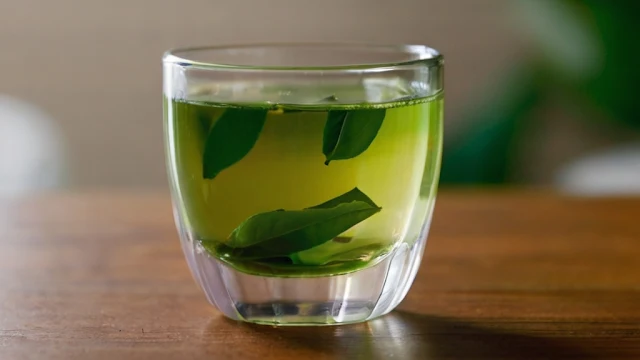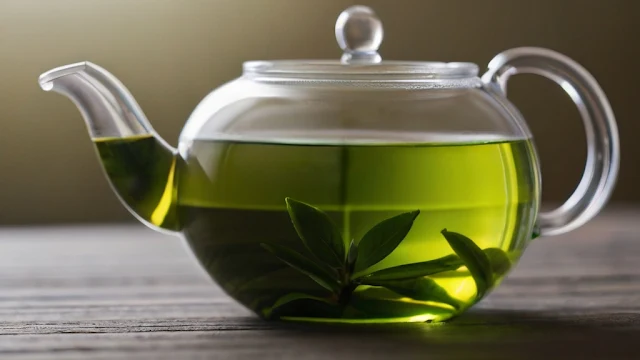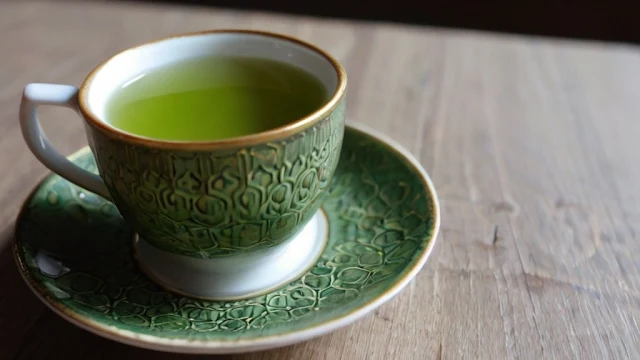Green tea and its amazing health benefits

Green tea, a beverage steeped in history and revered for its health benefits, transcends the realm of a simple drink. Cultivated from the Camellia sinensis plant, its emerald leaves boast a unique processing method that unlocks a treasure trove of antioxidants and bioactive compounds. This article delves into the world of green tea, exploring its essence, uses, potential health advantages, diverse varieties, and considerations for consumption.
History of green tea
Green tea's roots trace back to ancient China, with evidence suggesting its consumption as early as 3,000 BC. Revered for its medicinal properties, it gradually gained popularity throughout Asia and eventually found its way to the Western world. Unlike black tea and oolong tea, green tea undergoes minimal processing. The leaves are harvested, pan-fired, or steamed to halt oxidation, and then dried. This process preserves the natural green color of the leaves and safeguards the wealth of health-promoting compounds.
Green tea and its many uses
Green tea transcends the realm of a refreshing beverage. Its versatility extends to various culinary applications. Green tea powder, known as matcha, is a vibrant green powder whisked into lattes, smoothies, and baked goods, adding a touch of earthy sweetness and a vibrant green hue. Green tea leaves can also be incorporated into savory dishes like stir-fries and marinades, imparting a subtle vegetal note. Furthermore, green tea extract finds use in dietary supplements and cosmetic products, leveraging its potential health benefits for holistic wellness.
What are the health benefits of green tea?

benefits of green tea
Green tea's reputation as a health elixir stems from its rich composition of antioxidants and bioactive compounds. The most prominent of these is epigallocatechin gallate (EGCG), a potent antioxidant with a multitude of potential health benefits. Here's a glimpse into some of the promising areas of green tea research:
Cognitive Function: Studies suggest that green tea may enhance cognitive function and memory. The combined effect of caffeine and L-theanine, an amino acid found in green tea, may contribute to improved alertness, focus, and cognitive performance.
Heart Health: Green tea's anti-inflammatory and antioxidant properties may play a role in promoting heart health. Research suggests it may help regulate blood pressure and cholesterol levels, potentially reducing the risk of cardiovascular disease.
Weight Management: Green tea may modestly aid weight management efforts. It may boost metabolism and increase fat burning, although a healthy diet and exercise remain crucial for sustainable weight loss.
Cancer Prevention: While research remains ongoing, some studies suggest that green tea consumption may be associated with a reduced risk of certain types of cancer. The antioxidant properties of EGCG may play a role in this potential benefit.
Skin Health: Green tea's anti-inflammatory properties may contribute to improved skin health. Topical application or consumption may help reduce inflammation and protect the skin from sun damage.
It is important to note that these are potential benefits, and further research is needed to fully understand the long-term effects of green tea consumption. Additionally, individual experiences may vary.
What are the types of green tea?

types of green tea
The world of green tea offers a spectrum of flavors and aromas, each reflecting the unique terroir and processing methods. Here's a glimpse into some popular green tea varieties:
Sencha: This classic Japanese green tea boasts a grassy, vegetal flavor and is a popular choice for everyday enjoyment.
Matcha: This vibrant green powder is a hallmark of Japanese tea ceremonies. It has a rich, umami flavor and is known for its high concentration of EGCG.
Longjing: Hailing from Zhejiang province in China, Longjing is prized for its delicate, sweet flavor with a hint of floral notes.
Gunpowder Tea: This Chinese green tea features tightly rolled leaves that unfurl during brewing. It offers a strong, slightly smoky flavor.
Genmaicha: This Japanese green tea is blended with roasted brown rice, resulting in a nutty, toasty flavor with a lower caffeine content.
What should be taken into account when consuming green tea?
While green tea offers a multitude of potential benefits, it's crucial to maintain a balanced approach to consumption. Here are some factors to consider:
Caffeine Content: Green tea does contain caffeine, albeit less than coffee. Individuals sensitive to caffeine may experience jitters or anxiety with excessive consumption.
Nutrient Interactions: Green tea may interfere with the absorption of certain nutrients, such as iron. Spacing out green tea consumption from meals rich in iron can help mitigate this effect.
Medications: Green tea may interact with some medications. Consulting a healthcare professional before incorporating green tea into your routine, especially if on medication, is recommended.
How to prepare green tea?

prepare green tea
The art of brewing green tea unlocks its full potential for taste and health benefits. Here are some key steps to ensure a delightful cup:
Water Temperature: Green tea thrives in cooler water compared to black tea. Aim for temperatures between 160°F (71°C) and 180°F (82°C) to prevent bitterness.
Leaf Quantity: The ideal amount of loose-leaf tea varies depending on the variety and desired strength. Generally, use 1-2 teaspoons of loose-leaf tea per 6 ounces of water.
Steeping Time: Oversteeping can lead to bitterness. Steeping times for green tea typically range from 30 seconds to 3 minutes, depending on the type of tea. Experiment to find your personal preference.
Multiple Infusions: Some green teas, like Sencha, can be steeped multiple times. Each subsequent infusion reveals a slightly different flavor profile.
Other uses of green tea
Green tea's versatility extends beyond beverages and culinary applications. Its natural astringency and deodorizing properties make it a valuable addition to various household uses:
Natural Deodorizer: Steeped green tea leaves can be placed in bowls or sachets to neutralize unpleasant odors in refrigerators or cupboards.
Air Freshener: A diluted green tea spray can be used as a natural air freshener for a subtle, clean scent.
Gardening Companion: Green tea compost can help nourish plants and deter pests due to its mild tannins.
Green tea and environmental considerations
Green tea cultivation offers a relatively sustainable option compared to other beverages. The Camellia sinensis plant is known for its resilience and requires minimal processing. However, responsible sourcing practices are still crucial. Look for certifications like organic or Fairtrade to ensure ethical and environmentally friendly production.
In the end: Green tea transcends the realm of a beverage, offering a journey into history, tradition, and potential health benefits. From its meticulous processing to its diverse applications, green tea invites exploration and appreciation.
By understanding its potential benefits, exploring its varieties, and embracing sustainable practices, one can truly embark on a holistic green tea experience. Remember, consult a healthcare professional before incorporating green tea into your routine, especially if on medication or with underlying health concerns. As with all things in life, moderation is key to reaping the full rewards of this time-tested elixir.
Important note: This article is for health awareness only and is not considered a basic reference. You must consult a specialist for your safety. Thank you.

موقع ساقط
You must be logged in to post a comment.